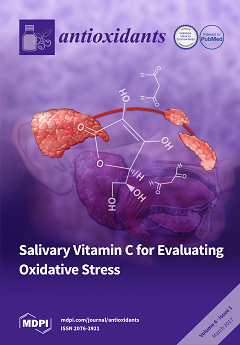Since the heydays of Reactive Sulfur Species (RSS) research during the first decade of the Millennium, numerous sulfur species involved in cellular regulation and signalling have been discovered. Yet despite the general predominance of organic species in organisms, recent years have also seen
[...] Read more.
Since the heydays of Reactive Sulfur Species (RSS) research during the first decade of the Millennium, numerous sulfur species involved in cellular regulation and signalling have been discovered. Yet despite the general predominance of organic species in organisms, recent years have also seen the emergence of inorganic reactive sulfur species, ranging from inorganic polysulfides (HS
x−/S
x2−) to thionitrous acid (HSNO) and nitrosopersulfide (SSNO
−). These inorganic species engage in a complex interplay of reactions in vitro and possibly also in vivo. Employing a combination of spectrophotometry and sulfide assays, we have investigated the role of polysulfanes from garlic during the release of nitric oxide (
•NO) from S-nitrosoglutathione (GSNO) in the absence and presence of thiol reducing agents. Our studies reveal a distinct enhancement of GSNO decomposition by compounds such as diallyltrisulfane, which is most pronounced in the presence of cysteine and glutathione and presumably proceeds via the initial release of an inorganic mono- or polysulfides, i.e., hydrogen sulfide (H
2S) or HS
x−, from the organic polysulfane. Albeit being of a preliminary nature, our spectrophotometric data also reveals a complicated underlying mechanism which appears to involve transient species such as SSNO
−. Eventually, more in depth studies are required to further explore the underlying chemistry and wider biological and nutritional implications of this interplay between edible garlic compounds, reductive activation, inorganic polysulfides and their interplay with
•NO storage and release.
Full article






